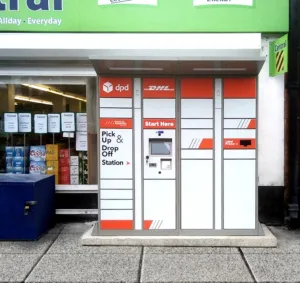By Charlie Casey, CEO of LoyaltyLion
Amidst the cost-of-living crisis, consumers are clamping down on their spending. From cancelling Netflix subscriptions to cutting back on non-essential items, according to BDO’s high street sales tracker, May saw the lowest like-for-like sales growth in 15 months as conscious consumers tackle rising bills.
This is a turbulent time for retailers, but the outlook may not be the same for all sectors. Some industries will be more susceptible to rising inflation than others, and there may be opportunities for more vulnerable industries to emulate the characteristics that offer such immunity.
The industries set to boom
While the recent COVID pandemic disrupted many businesses, it also drove consumers to reassess their priorities.
We probably all know someone who bought a lockdown pet, while existing owners had more time to spend with their four-legged friends. As a result, the pet industry was certainly one that boomed and continues to do so. Pets at Home, for example, forecasts record sales and profits this year after already seeing a successful Christmas. The company’s boss, Peter Pritchard, said that despite the rising cost of living, people were unlikely to cut back on pet spending.
Remember Joe Wicks’ online PE classes? Although many of us were forced to stay at home during lockdown, it encouraged more people to take a newfound interest in fitness, with those habits set to continue. As more people are taking care of themselves, health, wellness, and beauty brands have prospered.
Data from consumer research platform Attest highlights that food and beverage brands are still receiving plenty of interest too. In a poll of 1,000 UK consumers conducted earlier this year, over half were actively looking out for products that supported their overall health, and were prepared to pay a premium for better ingredients.
Of course, not all industries will maintain growth as successfully. As has already been well-publicised, subscription services such as Netflix and other things that people signed up for to pamper themselves throughout the pandemic (alcohol, meal boxes etc.) are now taking the hit. Fast fashion is another. When people have less disposable income, they naturally go out less and require fewer outfits. The rise of the ‘conscious consumer’ may also have an impact here as people move away from ‘throwaway outfits’ for environmental reasons.
But it’s not all doom and gloom. By offering a superior experience or perks, retailers can emulate the success of the industries that are immune to inflation, by proving to their customers that it’s worth staying engaged, even while they’re not spending. Here’s how:
1. Offer more ways to earn points
The luxury industry is a fantastic example of an inflation-proof vertical. People save up and are prepared to wait for these types of purchases, as opposed to impulse or ad-hoc purchases prompted by ads or window shopping. Consumers will continue to shop this way; it might just take them a little longer to reach their savings goals.
Non-luxury brands can use loyalty program points to replicate this approach. By encouraging customers to engage in between purchases and earn points through non-transactional activities such as account creation, birthdays and social follows, brands can use points balances to recreate the idea of saving up and returning to spend. Once shoppers have saved up enough points, they’ll be back to make the purchase they’ve been waiting for, just as they would with a luxury item.
2. Create emotional connections
As mentioned earlier, the pet industry continues to boom thanks to the ongoing dedication and love that so many feel for animals. Retailers in this sector benefit from this passion because they have the ability to emotionally connect with their customers around a shared interest.
To replicate this, consider the causes, values or beliefs that you share with your customers. Whether you’re selling sustainable products, or you simply share a great love for a hobby with your customers, find common ground to build a connection on. You can then demonstrate that shared passion to them by allowing them to support the causes they care about via your loyalty program. For example, using charitable earning opportunities and rewards where customers can redeem points in the form of a donation to their preferred cause.
This allows you to create a longer-lasting and more human connection with your shoppers, evoking the same emotional response that the pet industry benefits from.
3. Encourage a feeling of community
While physical separation was certainly a significant part of the pandemic, many retailers found ways to bring their customers together online, in other ways. For example, online communities boomed during this time as people turned to the internet to discuss and share interests on health, fitness, beauty, and more. Retailers who focussed more on creating and sharing content with their communities, built some very strong foundations which have kept their loyal community members connected as things have returned to normal.
These Insider communities can go a long way towards helping brands remain immune to inflation and the rising cost of living. Brands should use their loyalty programmes to foster the feeling of community by using tiers that offer more and more exciting or educational content, the more a customer engages. This will not only help keep shoppers in the community regardless of whether they’re ready to spend, but it will keep them engaging to earn more points and unlock the next reward, securing a transaction. It will also help to add more consumers into the community, creating more advocates, and an increasing buzz around a brand.
Your existing customers are your secret weapon
As the cost of living continues to increase, it’s undoubtedly an uncertain time for those in ecommerce. As a result, it can be tempting to spend more at the top of the funnel to bring in new customers for quick wins, rather than focusing on the longer-term view.
However, the key to maintaining your ecommerce growth lies much closer to home. Businesses who take a step back, consider and replicate how those in less susceptible sectors are engaging their existing customers, will see that there are lots of opportunities to keep those who already know and trust your brand engaging and reconverting, whether they were planning to shop or not. Your existing customers are the key to your brand security in the coming months.










